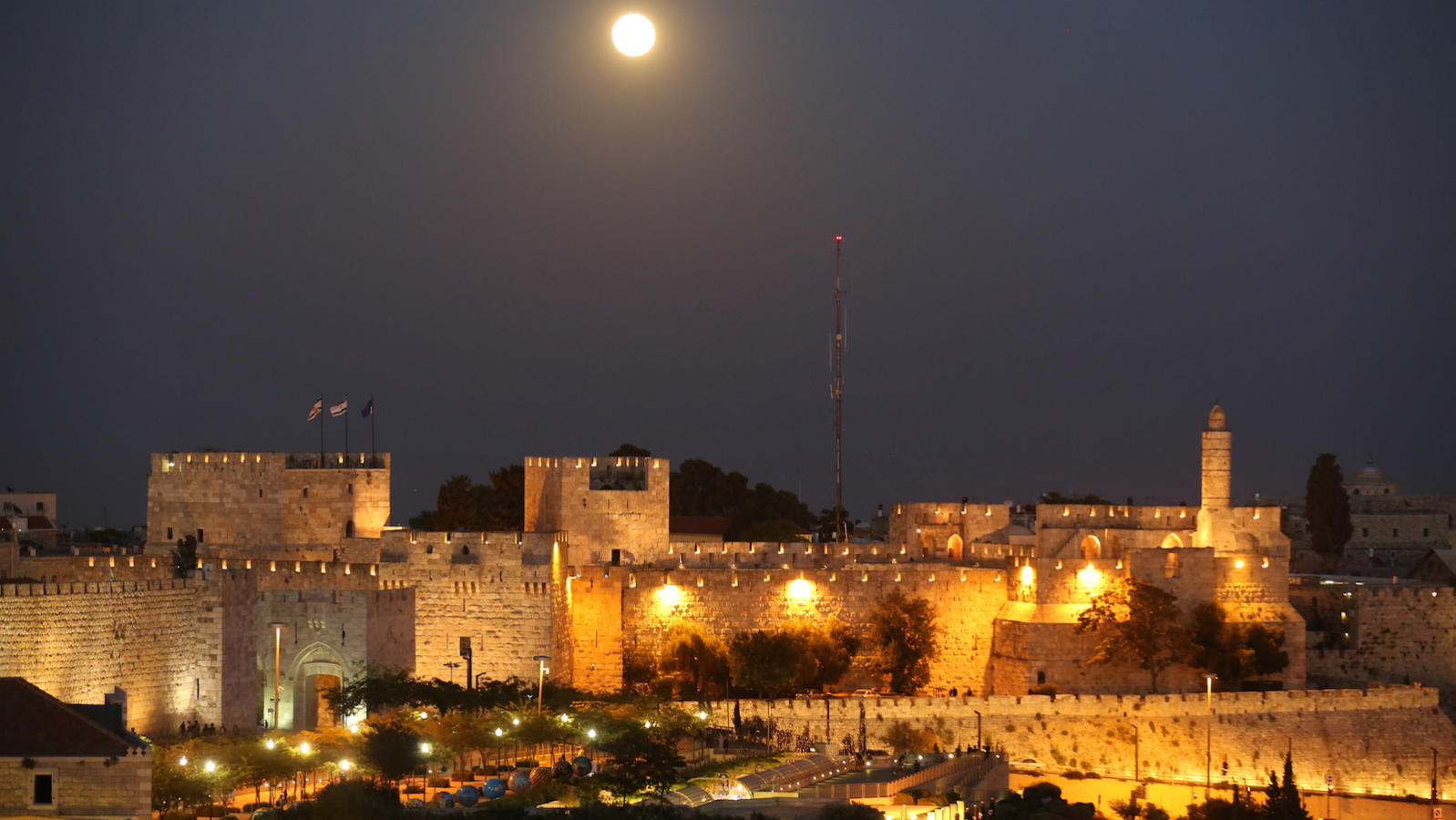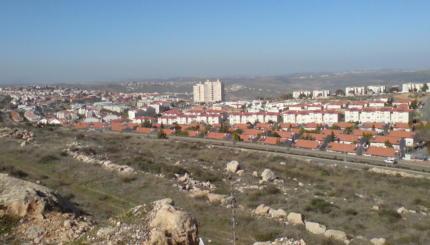Following the 1948 War of Independence, the Israelis declared military control over West Jerusalem, extending the law of Israel to the territory for purposes of administration. Palestinian notables called on King Abdullah of Transjordan to annex eastern Jerusalem, and meetings with the Israelis were arranged in order to discuss the terms of the truce and perhaps plan for a peace agreement. While a peace agreement was not reached, Israel and Transjordan did sign an armistice agreement in April of 1949, freezing the borders of Jerusalem and formalizing the partition of the city.
A City Divided
Israeli and Jordanian solidarity behind the idea of partition would help ensure its maintenance in the face of United Nations pressure to make Jerusalem an international city. In the meantime, Israel took further steps towards annexing West Jerusalem, allowing its residents to participate in the first Israeli general election in January 1949 and instituting civil administration there in February.

In December 1949, disregarding (and in opposition to) U.N. reaffirmation of the principle of internationalization, the Israeli parliament declared Jerusalem an inseparable part of Israel and its eternal capital. No major powers accepted this declaration, but Prime Minister David Ben Gurion was nonetheless confident that it would be allowed to stand, maintaining “Transjordan would permit no one to get them out of Jerusalem; consequently, no one would dare remove us.” His instincts proved correct — the world powers eventually accepted the status quo, passing no further resolutions on Jerusalem until 1967.
With your help, My Jewish Learning can provide endless opportunities for learning, connection and discovery.
READ: What We Talk About When We Talk About Jerusalem
Between 1949 and 1967 Jerusalem was divided by walls and barbed wire. There were hardly any Arabs in West Jerusalem, and effectively no Jews in East Jerusalem. Movement between the two areas was limited to a single crossing point. Most of the major powers kept one consul but two consular offices, one in West Jerusalem and one in East Jerusalem. While discussions with Transjordan (now Jordan) continued for several years, neither side was ready to make a final deal, and in 1951 the king was assassinated (many suspect that the Grand Mufti was involved), causing talks to gradually break off. Few Israelis advocated a nationalist policy towards East Jerusalem, and the division would remain in place until the Six Day War in June, 1967.
Reunification of Jerusalem
In May of 1967, following Egyptian closure of the Straits of Tiran (a casus belli as far as Israel was concerned), King Hussein of Jordan signed a defense pact with Egypt — this despite Israel’s assurances that it would not advance towards Jordan if Jordan refrained from participating in the attack on Israel. The Israeli forces quickly defeated the Egyptian attack and then captured East Jerusalem as part of a sweep through the West Bank.
Defense Minister Moshe Dayan went to the Western Wall and declared Jerusalem liberated, proclaiming, “We have united Jerusalem, the divided capital of Israel. We have returned to the holiest of our Holy Places, never to part from it again.” The Israeli public — as well as the Jewish world at large — received the news with great joy. Before long the walls and barbed wire dividing the city had been torn down and the checkpoints removed, and free movement between East and West Jerusalem was restored.
Annexation or Occupation?

Israel was then faced with an important diplomatic and legal decision: Would East Jerusalem be annexed to Israel or would it, like the West Bank, be considered occupied territory, subject to Jordanian laws but under Israeli military administration? In mid-June the Knesset offered its answer, taking a series of measures that ensured the inclusion of East Jerusalem in Israel.
The Law and Administration Ordinance, passed first, permitted the application of Israeli law and administration to any area formerly part of Mandatory Palestine. Next, the Municipalities Ordinance was changed to allow the expansion of the borders of the municipality in those areas where the Israelis have chosen to apply their jurisdiction. Finally, in accordance with the laws above, the government ordered that Israeli sovereignty be extended to Eastern Jerusalem, with the assurance that, by force of law, “the Holy Places shall be protected from desecration and any violation and from anything likely to violate the freedom of access of the members of the different religions to the places sacred to them.”
In July of 1967 the United Nations General Assembly passed a resolution declaring Israel’s actions invalid, and calling on Israeli government to reverse them. Soon after the U.N. Security Council passed a resolution critical of these actions as well, by an incredible vote of 13:0. The Israelis also came under U.N. attack for commissioning archaeological excavations in the Old City of Jerusalem. No major power accepted the extension of Israeli law into East Jerusalem, and after the Yom Kippur War in 1973 many nations in Africa and elsewhere, under pressure from the oil-producing countries, broke off relations.
Palestinian Opposition
From 1967 Israel worked, with limited success, to unite Jerusalem politically and administratively. After dismissing the mayor of East Jerusalem from his post, the Israelis approached him and his colleagues to be part of an enlarged municipal government. The Palestinians refused, concerned that accepting nomination to the council would imply recognition of Israeli sovereignty in East Jerusalem. Similarly, nearly all East Jerusalem Arabs rejected the offer of Israeli citizenship, preferring instead to remain Jordanian citizens.
An amendment to Israeli law allowed the Palestinians in East Jerusalem to vote in municipal elections despite their resident alien status, but few took advantage of this opportunity, again choosing to disenfranchise themselves rather than lend legitimacy to Israeli rule. This decision to boycott the Israeli political system would have a significant impact on the quality of life in East Jerusalem as city planning and development pushed forward without the input of the Arab population.
Inequity Grows
During this period the inequity grew, as the municipal and national governments pursued the interests of Jewish Jerusalem, including moves to ensure that Jerusalem would remain the nation’s capital. On the principle that “[e]very area of the city that is not settled by Jews is in danger of being detached from Israel and transferred to Arab control,” city planners worked to build a ring of Jewish population around the northern, northeastern, and southern periphery of the city.
Construction of Jewish homes was encouraged, financially and bureaucratically, while the Palestinian Arab population was granted very few residential construction permits, forcing them to build illegally or else outside the city. This discrimination was also reflected in the delivery of city services. Despite the stated Israeli desire to maintain a united Jerusalem–embodied best by the 1980 Basic Law declaring that “Jerusalem, complete and united, is the capital of Israel,” municipal policy ultimately served to further entrench the city’s East/West divisions, a reality that would assume extreme importance as the Palestinians grew in political strength.
Knesset
Pronounced: k'NESS-et, Origin: Hebrew, Israel's parliament, comprising 120 seats.
Moshe
Pronounced: moe-SHEH, Origin: Hebrew, Moses, whom God chooses to lead the Jews out of Egypt.
Yitzhak
Pronounced: eetz-KHAHK, Origin: Hebrew, Hebrew name for Isaac.



